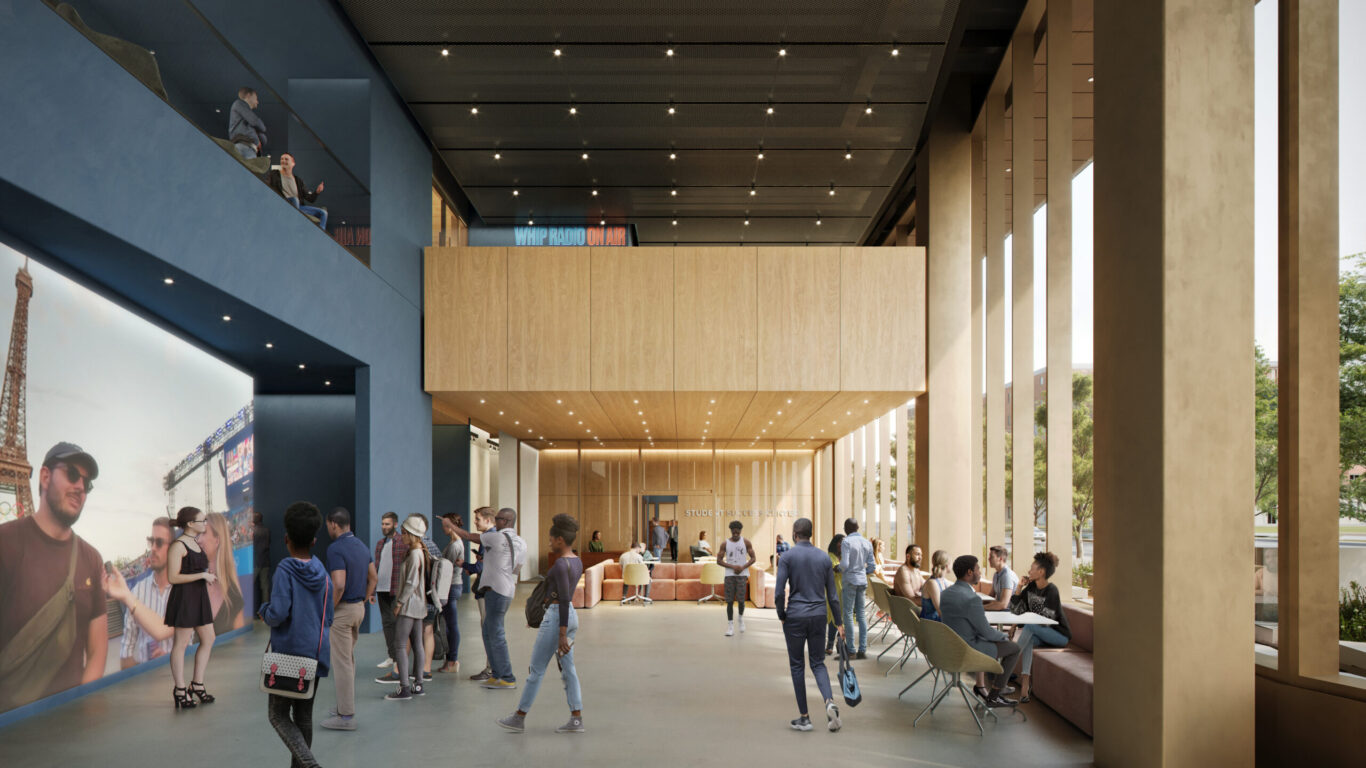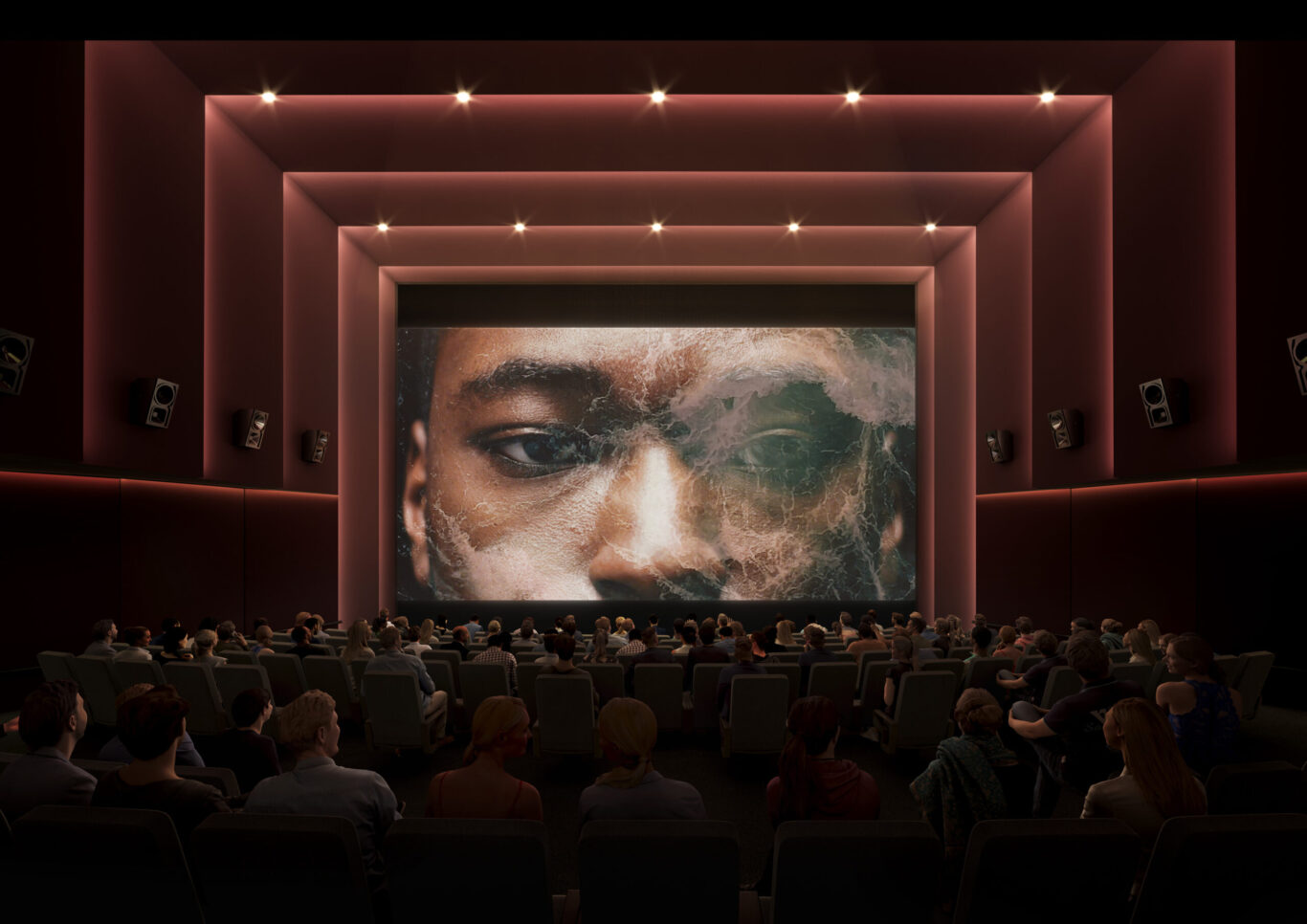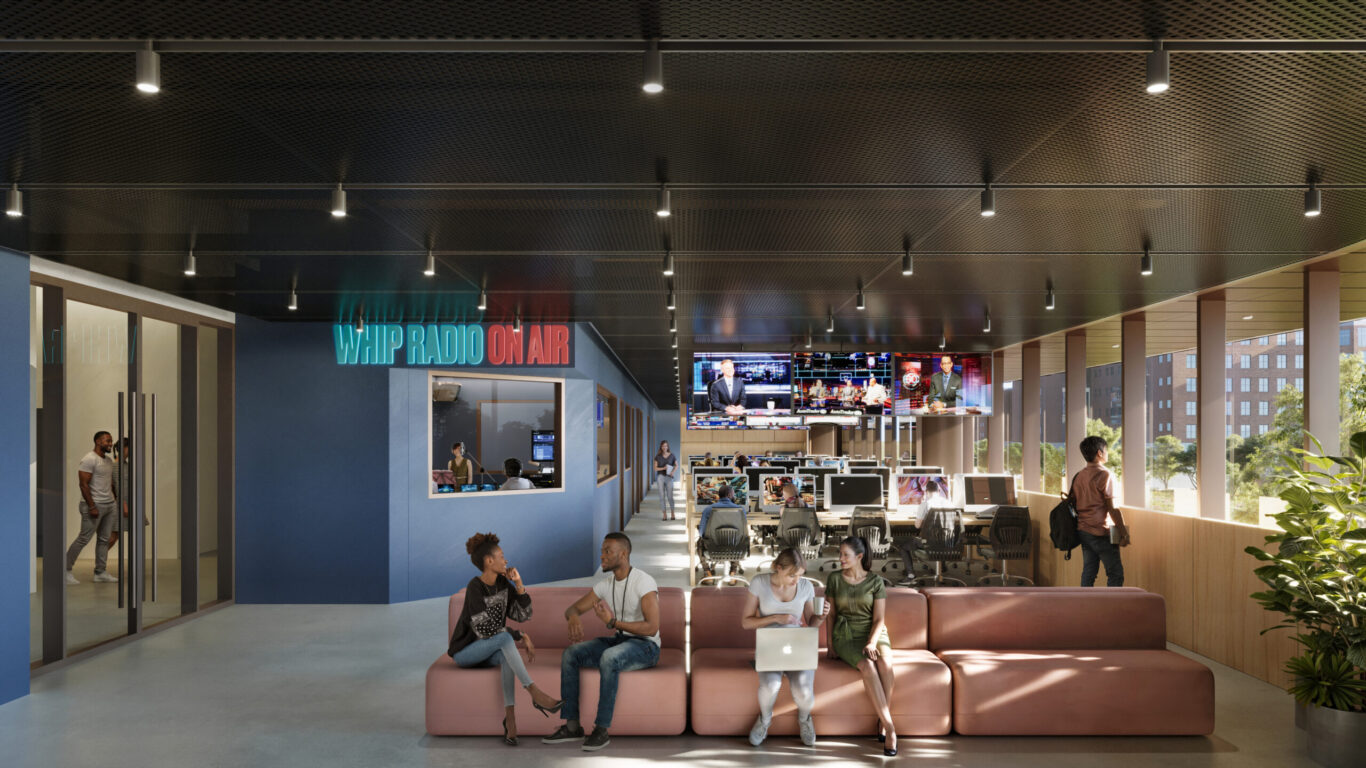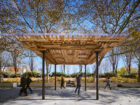The new hub for media and performance will bring together two schools in a single, state-of-the-art facility that creates an engaging gateway to campus
Temple University and Skidmore, Owings & Merrill (SOM) are celebrating the groundbreaking of the Caroline Kimmel Pavilion for Arts and Communication, a state-of-the-art media hub and performance venue designed for learning, creativity, and entertainment. Scheduled for completion in fall 2027, the project will bring the Klein College of Media and Communications and the Center for Performing and Cinematic Arts (CPCA) together under one roof for the first time. These programs, previously housed in multiple buildings, will now share a 200,000-square-foot home that encourages interdisciplinary collaboration and supports new possibilities for academic and community programming.
“This bold new addition to Temple’s campus represents an investment in the future of education, creativity, and community,” said Martin Droz, Temple University Associate Vice President, Planning, Design and Construction. “As a signature space at the heart of Broad Street, it will inspire collaboration, innovation, and engagement across disciplines for generations to come.”

Located at the western edge of campus, the Caroline Kimmel Pavilion is conceived as a new gateway to the university. The building frames Polett Walk, the main pedestrian axis on campus, to create a portico-like structure that invites the public to pass directly through it. This path is lined with a series of outdoor amenities—from revitalized green spaces to a new outside amphitheater for performances and gatherings.
“The building acts as a bridge between Klein College and CPCA, tying together these two academic communities and displaying the creativity of students through its great sheets of glass,” said Partner Colin Koop. “It activates the public realm—connecting the surrounding community to the Temple University campus and creating an artistic anchor to Broad Street.”

Large glass apertures along the facade reveal the activity within, exhibiting a range of creative spaces and learning environments. Studios, post-production spaces, and screening rooms—modeled after professional facilities and designed to adapt to new media technology—sit within these apertures. Classrooms and faculty offices lie further inside, and a series of performance and entertainment venues including a 375-seat proscenium, a 180-seat cinema, 140-seat black box theater, and a 63-seat screening room provide space for students to showcase their work. To highlight these specialty performance and studio spaces and enhance wayfinding, SOM’s Graphics + Brand Studio developed a striking visual approach—using a graduated palette from red to blue to reflect both distinction and unity between the two schools. Visible through the building’s apertures and punctuated by large-scale signage, the colored volumes help to communicate the school’s activities to the public.

“In the context of an evolving media industry, flexibility became an essential component of our holistic design strategy,” said Partner Laura Ettelman. “From the lobbies through each individual studio, theater, and classroom, every space is modular, multifunctional, and adaptable to emerging technologies to support future generations of students.”
A series of sustainability strategies further position the building toward the future. The interiors prioritize sustainable and healthy materials, warm finishes, communal spaces, and daylighting to benefit health and wellbeing for students and faculty. A large green roof, native plantings, bird-friendly glass, and an overall window-to-wall ratio of 30 percent contribute to the project’s LEED Silver target.







